Jane Edwards interviewed by Lily Kingscote for Food Forever
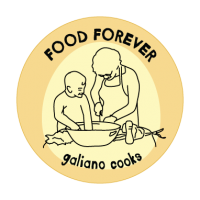 When you were a child, how did you get your food?
When you were a child, how did you get your food?
Mostly from the garden, or from neighboring farmers. We lived in the country, on what used to be a farm. And also, there weren’t supermarkets where I lived, I think there were very few supermarkets anyway, even in the big cities. And tradesmen came to you, you didn’t have to go out much. But the bread man came, and the fish, the butcher and people came to you, and you bought at the door.
When you were young, how did you keep your food?
Well, in the first house I remember, we didn’t have electricity, it was a very comfortable little old farmhouse, and the most important place for keeping food was a north-facing little very cool room with thick walls, slate shelves, so stone shelves, a small window, and very closely screened so no flies could get in and food was kept on either the cold stone floor or the cold stone shelves, and we had fly screens for everything. One of the things we did was make little net covers, little net rounds weighted and the edge with beads, and if you had a milk jug or something, you would put that over to keep any flies or bugs out, or dust. All food was covered; there were screens, small screens and big screens, and dish covers, and keeping food cold was the main aim of this little pantry, as it was called.
How is getting food different now from when you were a kid?
Well, today you have the supermarket, the big store, and rather than getting the food brought to the door, you go to the store, walk up and down the aisles, pick out what you want, and take it home with you! Also, in those days very few people had cars. We didn’t have a car, so that it would have been a big problem, unless you had a pony and trap, which of course I uses to have on Galiano. It was a problem going and getting your food, so that’s not how it worked. Food came to you.
What is your favorite local food?
I think I’d probably have to say salmon.
Tell me about a food memory you have from childhood.
I think my mother’s spaghetti. She wouldn’t cook the pasta very much, not squishy. I’m afraid most English people overcook their food, but she was a very good cook. She would make this delicious tomato sauce, and then grated cheese on that, and then, the finishing touch, this is what made all the difference, she would put a fair little handful of chopped mint in the sauce at the last minute and stir it around. And then, when you served the spaghetti, the sauce, the white cheese, she would top it all off with some roughly chopped raw dandelion, and I do that to this day. The contrast in taste is absolutely delicious and I loved it even when I was a little kid. It’s pretty too. And very Italian. You know the Italian flag is green and red and white.
What seasonal foods so you eat?
As much as possible I do, and as the year goes round, the first is nettles, in February, and going through the spring, the wild greens, and I get all excited when the asparagus comes in, the strawberries are coming in now, and I won’t eat tomatoes out of season, because they’re mostly not worth eating. I wait until our own local tomatoes are here, and then they’re worth eating. So I go through the year like that, and in the fall I hope to get some deer meat. I don’t always, but it’s really nice. And in the very brief herring season, one of my favorite Galiano foods is if I’m able to get a bucket of herring and salt them down, or make pickled herring. So I would have to give you a long, tiresome list. And there’s mushrooms. There’s all the wild greens, and I think there’s another category for that, so we won’t go into it, but all the garden food,s I try to wait till the proper season and not buy then brought in from out of province, I try to get foods grown here.
How do you overwinter your food?
I don’t do much now. When I lived on my little farm, yes, I would make sauerkraut, and well, I still freeze quite a lot, it was mostly freezing and bottling, and preserving in that way. When I needed to I borrowed a dehydrator, that is a great help. You can make excellent things with dried food. You could dry your beans without any particular fuss, just lay them out in a flat basket.
How and where do you shop for your food?
Well, now Mrs. Krebs takes me out in the car and we go shopping once a week and we only shop on the island, unless there is something needed that is not carried on the island, and neither Mike not Daniel can bring it in, but that doesn’t often happen. So I go to the three stores on the island, the Market, the Garage, and the Corner Store once a week, and that’s how I do my shopping.
How did obtaining your food change when you moved to Galiano?
That was an excellent change. I slowly bit by bit got into gardening. I started out with a little patch about as big as this table with potatoes and onions, and it grew from there till it was quite a big garden, and I was very proud of it. Until I got too ill to go on, I had not bought any vegetables for thirty years. And I raised rabbits, and sheep, and had hens for eggs, and when they got too old to lay they went into soup. So I didn’t spend an awful lot on food till I had to move here. But that was the big change moving to Galiano and it was such fun doing it, I really enjoyed it.
What foods make you think of spring, and why?
Greens! The fun of finding the very first little nettles peeking up in February, and then the Siberian lettuce, and fiddleheads, not everybody like fiddleheads, but I love them. The sheep sorrel, and dandelions. It’s the wild food that make me think of spring.
What foods make you think of summer? Why?
Strawberries! Asparagus! Tomatoes! Those are wonderful foods of summer that you don’t eat any other time, and it’s such a treat. A tomato picked warm right off the plant and chomped right there is one of the delights of life.
What foods make you think of fall?
My very favorite used to be corn, corn on the cob. Have you ever eaten corn raw? This is a treat, let me tell you, even better than eating peas out of the pod. On a nice warm fall morning, strip a perfect ear off, peel it down to where you can get at it and sit there in the sun and chomp raw corn. It’s so good! That is delicious!
What food make you think of winter and why?
Good solid British food, I’d have to say. Steak and Kidney pie. Plum pudding for Christmas. Love it! That is, as far as I’m concerned, British pemmican. Take a good slice, wrap it up and put it in your pocket, and go for a long cold winter ride. That’ll really keep you going!
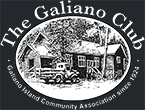
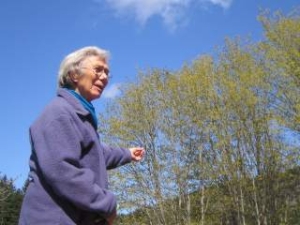 “I grew up in a sterile urban environment where I thought that the whole world was paved and that kind people dug up the pavement to plant seeds and let plants grow. My only joy was what was in the window boxes, my life long desire to be in nature.”
“I grew up in a sterile urban environment where I thought that the whole world was paved and that kind people dug up the pavement to plant seeds and let plants grow. My only joy was what was in the window boxes, my life long desire to be in nature.”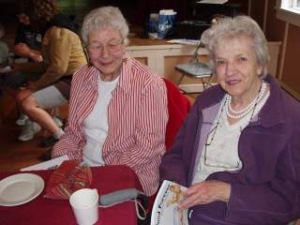 We lived in Cheshire England, the war was on, the war started in ’39. Food was rationed, we were only allowed so much per week per person. We were only allowed one egg per week per person. The food that was rationed for families was generally termed as fats which was butter or margarine or lard plus sugar and meat. Meat was rationed in a different way instead of them saying you can have so many ounces per week it would go by price, so they may say that for this period of time your meat ration would be a shilling. Therefore when you went to the butchers you would look around for the cheapest cut. You may get a lot of cheap meat or you may decide to get two chops. We were rationed because we were at war and we were an island and we got as lot of our food from different countries. The Merchant Navy sure helped us out. The convoys coming across the Atlantic they helped us out with food. Sometimes the rations were decided on by whether there had been a lot of shipping that had been bombed or torpedoed and there would be not as many ships coming in with food so then we knew that our rations would not be as big. We were often hungry. Oranges were very, very scarce and the only people to get oranges were expectant mothers and toddlers for the vitamin c. I don’t remember oranges at all and I never ate a banana until I came to Canada. Even sweets were rationed, sweets and chocolate you couldn’t just go to the store and buy some you needed a ration card. We couldn’t believe the variety of food when we came to Canada; rows and rows of cookies I remember particular. Even now I prefer to shop in a small shop where I can only see so many cookies so I don’t have to choose from 50 packets of cookies. We had never seen so much food. Well the ration was on for ten years by the time we came over so we had never seen so much food. We came over in ’49 and the rationing went on until ‘53/’54. The war was over in ’45 but we were still on ration. After the war we sent food to Germany and Europe. We were in need but they were more in need.
We lived in Cheshire England, the war was on, the war started in ’39. Food was rationed, we were only allowed so much per week per person. We were only allowed one egg per week per person. The food that was rationed for families was generally termed as fats which was butter or margarine or lard plus sugar and meat. Meat was rationed in a different way instead of them saying you can have so many ounces per week it would go by price, so they may say that for this period of time your meat ration would be a shilling. Therefore when you went to the butchers you would look around for the cheapest cut. You may get a lot of cheap meat or you may decide to get two chops. We were rationed because we were at war and we were an island and we got as lot of our food from different countries. The Merchant Navy sure helped us out. The convoys coming across the Atlantic they helped us out with food. Sometimes the rations were decided on by whether there had been a lot of shipping that had been bombed or torpedoed and there would be not as many ships coming in with food so then we knew that our rations would not be as big. We were often hungry. Oranges were very, very scarce and the only people to get oranges were expectant mothers and toddlers for the vitamin c. I don’t remember oranges at all and I never ate a banana until I came to Canada. Even sweets were rationed, sweets and chocolate you couldn’t just go to the store and buy some you needed a ration card. We couldn’t believe the variety of food when we came to Canada; rows and rows of cookies I remember particular. Even now I prefer to shop in a small shop where I can only see so many cookies so I don’t have to choose from 50 packets of cookies. We had never seen so much food. Well the ration was on for ten years by the time we came over so we had never seen so much food. We came over in ’49 and the rationing went on until ‘53/’54. The war was over in ’45 but we were still on ration. After the war we sent food to Germany and Europe. We were in need but they were more in need.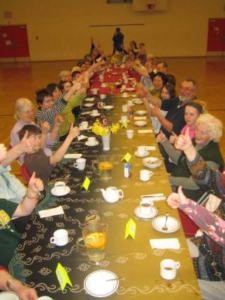 M: When you were a child, how did you get your food?
M: When you were a child, how did you get your food?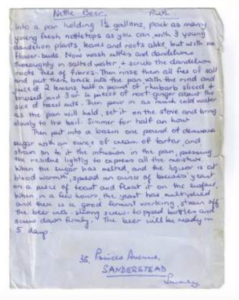 This is a typed version of the hand written recipe:
This is a typed version of the hand written recipe: